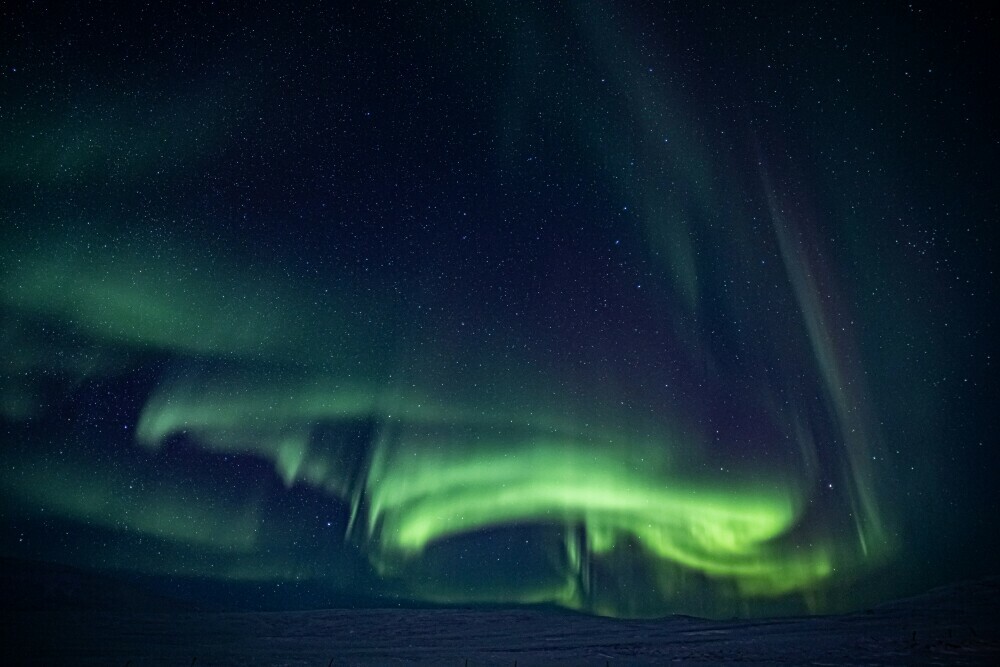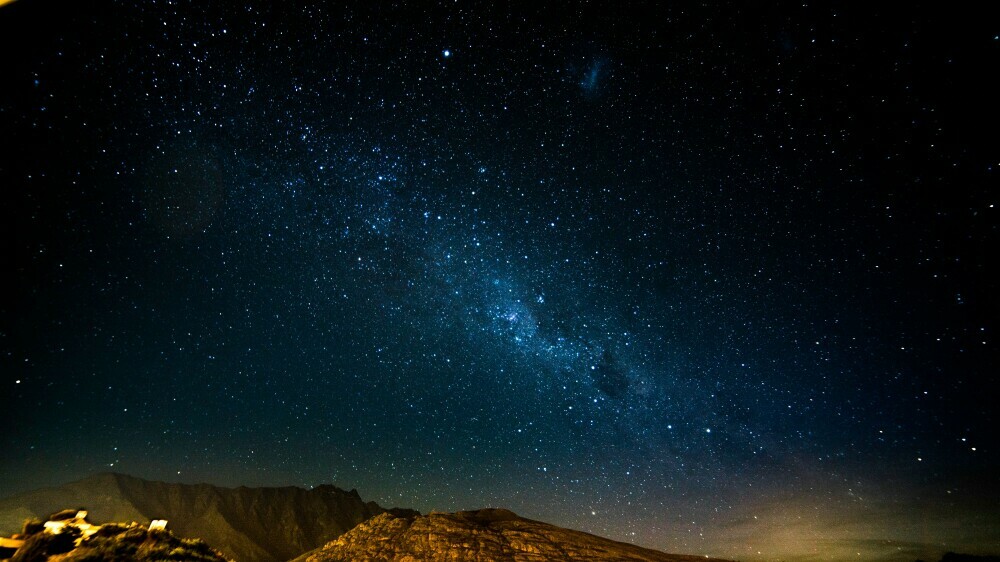 Max Stoiber. (2017). Lofoten Islands, Norway [Photograph]. Unsplash
Max Stoiber. (2017). Lofoten Islands, Norway [Photograph]. Unsplash
If you gaze upwards on a clear night at the correct latitude, you might witness one of nature’s most magnificent displays: the auroras, known as Aurora Australis and Aurora Borealis. Collectively referred to as Polar lights, these phenomena are not just mere bursts of color in the sky but cosmic ballets that narrate the intricate relationships between our planet and the solar atmosphere.
In this introduction, I’ll glimpse these celestial events, setting the stage for the awe-inspiring spectacle when solar particles meet our planet’s protective shield. The vast expanse of the sky becomes a living canvas for this mesmerizing dance, with Aurora Australis gracing the southern hemispheres and Aurora Borealis, the northern, like ethereal curtains of light.
Revered as the Southern and Northern Lights, these natural light shows are more than just visual splendor. They’re a fusion of science, folklore, and cultural significance. The opening act of this radiant narrative involves electrons and protons from the sun journeying through space and colliding with Earth’s atmosphere. It’s a universal spectacle that has unfolded for millennia, witnessed by countless generations of humans in awe and wonder.
As we move through this article, we’ll absorb the technical intricacies beneath their enigmatic charms, starting with a closer look at the atmospheric phenomena that make auroras possible. Understanding science is akin to enhancing the appreciation of a masterpiece by knowing the artist’s techniques. So, prepare to be enriched by your curiosity about these atmospheric light curtains as we proceed to the next section: the cosmic interplay between Earth and its ever-dynamic solar partner.
The Cosmic Symphony: Interplay of Earth and Sun
 Marcell Rubies. (2024). Iceland [Photograph]. Unsplash
Marcell Rubies. (2024). Iceland [Photograph]. Unsplash
Unveiling the science behind auroras necessitates understanding the dynamic relationship between the Earth and the sun. The magnificent Auroral displays we witness are a byproduct of a series of events that occur far above the planet’s surface. At the heart of these events lies the magnetosphere, Earth’s magnetic shield, which is pivotal in protecting our biosphere.
Streams of charged particles originating from the sun are known as Solar wind. This wind, often intensified by geomagnetic storms, interacts with the magnetosphere, causing disruptions that can lead to the spectacular light shows of the Polar lights. This intricate ballet of cosmic forces reveals the fascinating complexity of a phenomenon that, on the surface, delights our senses with its beauty.
When conditions are just right, and a mighty solar wind reaches Earth, it compresses the magnetosphere and releases energy into the upper atmosphere. Here, charged particles collide with gases like nitrogen and oxygen, creating luminous hues that paint the sky. Different gases produce different colors, creating a varied and vibrant palette for the aurora.
Deciphering this atmospheric phenomenon does more than satisfy our curiosity. It connects us to the vast universe beyond our daily experiences and starkly reminds us of the larger forces at play. As the charged particles illuminate the night sky, they invite us to consider the delicate balance and sheer power of natural processes that govern our world.
Auroras in Culture and Lore: Stories Skyward
 Joe Leahy. (2017). Queenstown, New Zealand [Photograph]. Unsplash
Joe Leahy. (2017). Queenstown, New Zealand [Photograph]. Unsplash
The narratives woven around the auroras, whether the Aurora Australis or the Aurora Borealis, are as captivating as the lights themselves. These tales illuminate the aurora myths and highlight the deep cultural significance of auroras. Around campfires and inside the warm walls of homes, stories have passed from one generation to another, reflecting how these celestial wonders shaped beliefs and traditions.
The Southern Lights and Northern Lights were seen as omens in many cultures. Some believed they were pathways to the afterlife; others saw them as battling dragons or dancing spirits. These interpretations offer a rare glimpse into the human need to explain the unexplainable, to find meaning in the dancing lights above.
Today, the reverence for these polar spectacles extends beyond their mythological roots into expressions of art and literature, where they still stir the human spirit with their otherworldly beauty. We see this in vivid paintings, storytelling, and even the names given to places under their glow. For instance, places within high latitudes are sometimes named to honor these lights, showcasing their importance in local lore and navigation.
The Northern Lights have a special place in Scandinavian culture, where they are often associated with the legends of the Valkyries, leading fallen warriors to the heavens. While less prominent in folklore, the Southern Lights have inspired indigenous Australian stories about ancestral spirits communicating from the cosmos.
This rich tapestry of auroral mythology underlines the importance of appreciating these natural phenomena as Astronomical marvels and as an integral part of human history and culture. As we transition into the next section about capturing the auroras, it’s essential that we not only seek the thrill of the chase through night sky photography but also reflect on the profound impact these lights have had on humanity throughout the ages.
Capturing the Night’s Palette: Aurora Photography and Science
 ThatPhotoGuyNL. (2018). Queenstown, New Zealand [Photograph]. Unsplash
ThatPhotoGuyNL. (2018). Queenstown, New Zealand [Photograph]. Unsplash
Aurora chasing has become a thrilling pursuit for photographers and skywatchers worldwide. These dazzling natural light shows aren’t just mesmerizing subjects for cameras; they’re dynamic events ripe for scientific inquiry.
For photographers, the auroras present a unique challenge. Mastering night sky photography is no small feat; it requires patience, precision, and the right equipment. Emphasizing the need for a clear understanding of camera settings, I can’t stress enough the importance of being conversant with long exposures and ISO sensitivity. Moreover, a heavy-duty tripod and a remote shutter release can make a significant difference in capturing crisp images of these ephemeral wonders.
In terms of science, auroras are more than just beautiful. They serve as windows into our planet’s atmospheric and magnetic processes. Studying these astronomical marvels can lead to discoveries about the Earth’s relationship with the sun and provide insights into the solar wind’s influence on our magnetosphere. Astronomers and space weather experts examine auroral data to predict geomagnetic storms that can influence satellite operations and power grids on Earth.
My advice for those eager to witness and perhaps photograph the auroras is to do so with respect and awe. These phenomena aren’t just amazing natural spectacles but delicate indicators of Earth’s more extensive cosmic connections. Remember, chasing the auroras isn’t about the perfect photo or scientific breakthrough alone—it’s about profoundly connecting with our planet and appreciating these celestial dances of light as integral parts of our world’s beautiful complexity.
